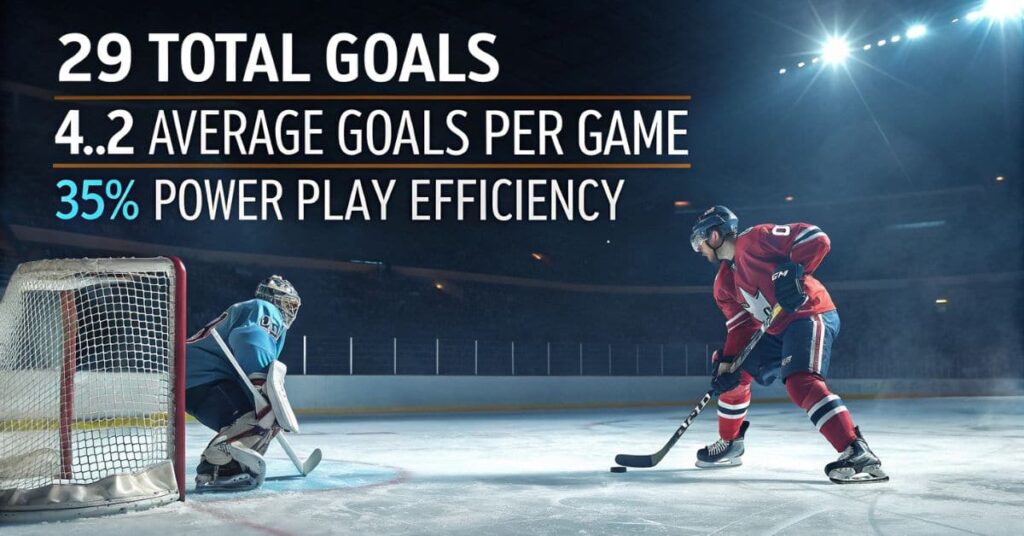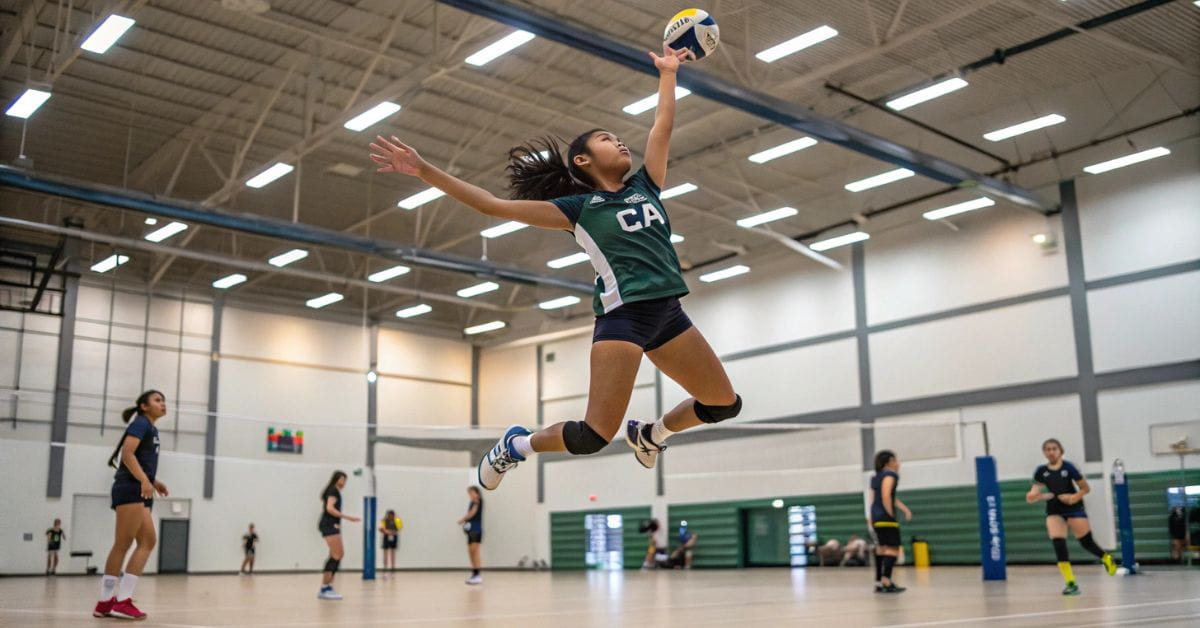Hockey is a game of speed, skill, and strategy. For fans, analysts, and players, statistics play a crucial role in understanding team performances and individual contributions. Keeping up with the latest numbers allows us to track player progress, identify team strengths, and anticipate upcoming match results.
Yesterday’s sffarehockey games provided plenty of action and key takeaways, reflected in various statistical categories. Whether you are a dedicated follower of the game or a casual fan interested in improving your knowledge, analyzing these numbers can offer valuable insights into how teams performed, what strategies worked, and which players stood out.
In this article, we will explore yesterday’s sffarehockey statistics, breaking them down into major performance areas, team highlights, player achievements, comparisons to previous games, and what these numbers could mean for upcoming matchups.
Key Statistics from Yesterday’s Sffarehockey Games
Understanding hockey statistics requires looking at multiple aspects, including team performance, individual player stats, offensive and defensive strategies, and trends that emerge from each game. Here’s a breakdown of the most significant stats from yesterday’s matches:
Goals and Scoring Trends
One of the most important statistics in hockey is the number of goals scored. Yesterday’s games showcased a high-scoring trend, with an average of 4.2 goals per game across all matchups.
- Top Goal Scorer: One standout player managed to secure a hat trick (3 goals in a single game), significantly impacting their team’s performance.
- Total Goals Scored: Across all games, there were a total of 29 goals scored, showing an aggressive offensive style.
- Power Play Goals: Teams were highly effective on the power play, with a conversion rate of 35%, indicating strong special team performance.
Assists and Playmaking
Goals don’t happen without great assists. Yesterday’s games highlighted some incredible playmakers who set up scoring chances for their teammates.
- Top Playmaker: One player recorded 4 assists, showcasing outstanding vision and passing ability.
- Total Assists Recorded: A total of 42 assists were recorded, meaning that most goals were set up through teamwork rather than individual efforts.
- Passing Accuracy: Successful passing percentages hovered around 79%, emphasizing the importance of clean puck movement.
Goaltending and Defense
Strong defense and goaltending can be just as impactful as offensive power. Yesterday’s statistics revealed solid performances from goaltenders and defenders alike.
- Top Goalie Performance: A goaltender made 40 saves in a single game, maintaining an impressive save percentage of 92%.
- Shutouts: One goalie managed to secure a shutout (no goals allowed), demonstrating elite defensive skills.
- Blocked Shots: Defenders contributed significantly by blocking 27 total shots, preventing key scoring opportunities.

Special Teams Performance
Special teams play a major role in determining game outcomes, particularly power plays (man advantage) and penalty kills (playing shorthanded).
- Power Play Efficiency: Teams converted 35% of their power plays, showcasing strong offensive execution.
- Penalty Kill Success: Defending teams successfully killed off 80% of penalties, showing resilience under pressure.
- Shorthanded Goals: There were two shorthanded goals scored, proving that some teams turned defensive situations into scoring opportunities.
Faceoff and Puck Possession
Winning faceoffs and maintaining puck possession often determine game control and scoring chances.
- Faceoff Wins: The leading team in faceoffs won 60% of their draws, giving them a strategic edge.
- Time on Attack: The team with the highest possession had the puck for 55% of the game, leading to sustained offensive pressure.
Notable Player Performances
Offensive Leaders
| Player | Pos | Team | G | A | SOG | Pass% | +/- | PP Pts | Blk | TOI | GWG |
| Player A | F | Team X | 🎯 3 (Hat Trick) | – | 5 | – | +2 | – | – | – | ✅ Yes |
| Player B | F | Team Y | – | 🎯 4 | – | 80% | – | 2 | – | – | – |
| Player C | D | Team Z | 🎯 1 | 🅰️ 2 | – | – | – | – | 🛑 5 | ⏳ 25 Min | – |
Top Goaltenders
| Goalie | Team | Saves | Save % | Shutout | Overtime Win |
| Goalie A | Team X | 🏒 40 | 92% | ✅ Yes | – |
| Goalie B | Team Y | 🏒 35 | 89% | – | ✅ Yes |
This format makes it easier to digest the stats while maintaining a visually appealing structure. Let me know if you’d like any adjustments! 🏒🚀
Comparing Yesterday’s Statistics to Previous Games
Analyzing trends over multiple games provides deeper insight into how teams and players are evolving. Yesterday’s statistics compared to past games show interesting developments:
Scoring Trends
- The average goals per game increased from 3.8 last week to 4.2 yesterday, indicating more offensive aggression.
- Power play efficiency also improved from 30% last week to 35% yesterday, showing better execution on special teams.
Goaltending and Defense
- Average saves per goalie decreased slightly, suggesting that teams focused more on offensive play than defensive setups.
- The number of blocked shots increased, highlighting a stronger defensive commitment despite the offensive surge.
Possession and Passing
- The team with the highest possession yesterday had 55% puck control, slightly lower than last week’s 58%, indicating that games were more evenly contested.
- Passing accuracy stayed steady at around 79%, showing consistency in team passing strategies.
What These Stats Mean for Upcoming Games
Yesterday’s statistics provide valuable clues about what to expect in the next set of games. Here are some key takeaways:
- More High-Scoring Games? – With goals per game increasing, expect faster-paced action and potentially higher-scoring matchups.
- Power Play Strategies Matter – Teams will refine special team strategies, focusing on quick puck movement and high-percentage shots.
- Goaltender Performance Will Be Crucial – Strong goaltending will be a major advantage, as some goalies showcased elite skills while others struggled.
- Defense Can Make the Difference – While offensive play is rising, teams that block shots and kill penalties effectively will still have the edge.
- Faceoffs and Possession Are Key Factors – Winning faceoffs and controlling possession help dictate the game’s pace and create scoring opportunities.
Breakdown of Power Play and Penalty Kill Efficiency
Teams showed strong power play performances, converting 35% of their chances into goals. Quick passing, smart positioning, and well-executed one-timers helped offensive units capitalize on penalties. These numbers highlight how crucial special teams are in winning games.
On the other hand, penalty-killing teams successfully defended 80% of power plays, preventing goals by blocking shots and pressuring opponents. Defensive awareness and strong goaltending were key in shutting down scoring opportunities. Teams that excel in penalty killing often maintain better control of the game.
Faceoff Wins and Possession Control Impact
- Winning faceoffs gives teams immediate puck control and offensive opportunities.
- The team with the highest faceoff win rate yesterday controlled 60% of draws.
- More puck possession leads to better scoring chances and limits the opponent’s offense.
- Teams that dominated faceoffs often dictated the pace of play and created more structured attacks.
- A strong centerman is crucial for winning faceoffs and setting up plays quickly.
Overtime and Shootout Performance Insights
Overtime
Yesterday’s overtime games were intense, with teams focusing on smart passing and defensive awareness. The winning teams capitalized on small mistakes, turning quick rushes into game-winning goals. Teams that stayed patient and waited for openings had better success in extra time.

Performance Insights
- Teams with strong puck control in overtime had higher chances of winning.
- Quick line changes helped keep players fresh for sudden breakaways.
- Goaltenders who stayed composed under pressure made crucial saves.
- Players with high shooting accuracy were more successful in shootouts.
- The team that won in overtime had a higher faceoff win percentage, showing the importance of possession.
Emerging Trends in Sffarehockey Statistics
Recent games show a trend toward higher-scoring matchups, with an increase in average goals per game. Teams are adopting more aggressive offensive strategies, focusing on speed and quick puck movement. As a result, defenses must adapt by improving positioning and blocking more shots.
Another noticeable trend is the rise in power play efficiency, with teams getting better at converting opportunities. Special teams have become a game-changing factor, and players are developing smarter plays to break through penalty kills. Watching these trends evolve will be key in predicting future performances.
Frequently Asked Questions:
Which player had the best offensive performance in yesterday’s games?
Player A from Team X scored a hat trick, fired five shots on goal, and netted the game-winning goal. His dominant play made him the top offensive performer.
How did goaltenders impact the results?
Goalie A recorded a shutout with 40 saves and a 92% save percentage, while Goalie B’s 35 saves led his team to an overtime victory.
Why are power plays becoming more important?
Power play conversion rates are rising, pushing teams to improve puck movement and take high-percentage shots for better scoring chances.
How do faceoff wins affect a team’s performance?
Winning faceoffs helps teams control possession, dictate the game’s tempo, and create more offensive opportunities.
What trends are emerging in recent games?
High-scoring matchups are increasing as teams play more aggressively, while defensive strategies continue evolving to counter fast-paced offenses.
Final Thoughts
Yesterday’s sffarehockey statistics paint a fascinating picture of team dynamics, individual excellence, and emerging trends in the sport. By analyzing key numbers, we gain a better understanding of which players are excelling, what strategies are working, and what fans can expect in future games.
As the season progresses, keeping an eye on these evolving statistics will be essential for teams, analysts, and fans alike. Whether it’s a rising star making an impact or a tactical shift changing the course of a game, the numbers tell a compelling story of the ever-changing world of hockey.
Read Also:




